Easy & Hearty Low FODMAP Vegetable, Pasta & Bean Soup
I had wanted to create a low FODMAP Vegetable, Pasta & Bean Soup – basically a version of pasta di fagioli, but I kept getting hung up on tradition, which says the soup should contain white beans (which are higher FODMAP).
And then I thought about what it was about this soup that I wanted to present and it was the heartiness – the hearty and nourishing combo of beans and pasta and lots of vegetables.
Once I relaxed my self-imposed classical approach I knew I could use a small amount of chickpeas and the rest of the soup came together quickly. I give you comfort food in a bowl – Low FODMAP Vegetable, Pasta & Bean Soup!
A Little of This, A Little of That
You will notice that this soup has a lot of ingredients, which is fabulous for flavor, color, texture and nutrition but can be problematic for those who are systematically working through their triggers.
This Low FODMAP Vegetable, Pasta & Bean Soup is technically safe for the Elimination phase and yet, all of us have different reactions to foods, FODMAP related or otherwise.
With a dish like this, with numerous ingredients, it can be difficult to hone in on what might be upsetting your tummy, if indeed that happens.
Perhaps if you already have knowledge that all of these ingredients sit well with you, or if you are at a stable stage with your diet, give it a go!
This soup doesn’t give me any trouble and in fact I find it very comforting – like comfort food in a bowl. I love being able to curl up with a bowl and spoon and eat my dinner!
Makes a great warming lunch, too.
At any rate, familiarize yourself with FODMAP Stacking, for more in-depth info.
Take Advantage of the Large Batch
This makes a lot, but it keeps well, you can eat it for days and it is no more difficult to make this generous batch.
Vegan Or?
The soup, as it is presented is vegan. You can, however, add a shower of Parmesan cheese if you like.
Let’s Talk Summer Squash
Zucchini, which has been lab tested for FODMAPs and a low FODMAP serving size is 65 g. It is not the same thing as yellow summer squash. Many folks digest yellow summer squash similarly to zucchini, but yellow summer squash has not been lab tested and individual digestive results might vary. Yellow patty pan squash has been lab tested and contains no FODMAPs. Please use the patty pan in lieu of summer squash if you want to be conservative in your approach.
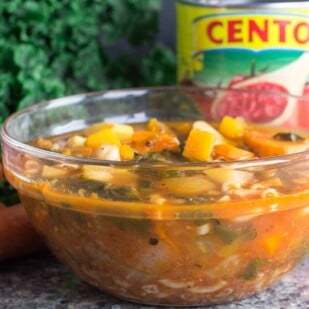
Low FODMAP Vegetable, Pasta & Bean Soup
This Low FODMAP Vegetable, Pasta & Bean Soup is hearty and nourishing and happens to be vegan! Easy to make, too.
Low FODMAP Serving Size Info: Makes about 14 cups (3.3 L); about 10 servings; about ¾ cup (180 ml) per serving.
Ingredients:
- 2 tablespoons Garlic-Infused Oil, made with olive oil, or purchased equivalent
- 3/4 cup (48 g) finely chopped scallions, green parts only
- 1/4 cup (18 g) finely chopped leeks, green parts only
- 8 cups (2 L) water
- 1, 28- ounce (794 g) can crushed tomatoes
- 1, 15.5- ounce (439 g) can chickpeas, drained, rinsed and drained again
- 12- ounces (340 g) diced butternut squash
- 8- ounces (225 g) red potatoes, scrubbed and cut into small bite-sized pieces
- 6- ounces (170 g) cleaned and trimmed kale, chopped finely
- 3 medium carrots, scrubbed, trimmed and cut into thick rounds (1/2-inch/12 mm or even larger)
- 2 cups (150 g) sliced bok choy
- 1 medium patty pan or yellow squash scrubbed, trimmed and cut into thick rounds (about 1/2-inch/12 mm thick)
- 1 medium zucchini scrubbed, trimmed, quartered and cut into small bite-sized pieces
- 1 teaspoon dried basil
- 1 teaspoon smoked paprika
- 1 teaspoon dried thyme
- Kosher salt
- Freshly ground black pepper
- 1 cup (100 g) raw gluten-free elbow or small shell shaped pasta
Preparation:
-
Place Garlic-Infused Oil in a large heavy pot or Dutch oven and heat over medium heat. Add scallion and leek greens and sauté for a few minutes until soft. Add water, canned tomatoes, chickpeas, squash, potatoes, kale, carrots, bok choy, yellow squash, zucchini, basil, smoked paprika and thyme and stir all together well. Season with salt and pepper.
-
Cover and bring to a boil over medium-high heat, then turn heat down and simmer for at least 30 minutes or until vegetables are tender, stirring occasionally. Taste and adjust seasoning as desired.
-
Meanwhile, cook pasta in a generous amount of salted water till al dente; drain and stir into soup (see Tips). Soup is ready to serve, or cool to room temperature and refrigerate in an airtight container for up to 5 days. Freeze for up to 1 month, adding pasta upon reheating. Reheat as needed.
Notes:
Tips
- You could cook the pasta right in the soup, but it gives you bit less control over the pasta texture and the pasta also soaks up some of the luscious soup liquid, but if you are short on time or don’t want to clean an extra pot, be our guest!
Nutrition
All nutritional information is based on third-party calculations and should be considered estimates. Actual nutritional content will vary with brands used, measuring methods, portion sizes and more. For a more detailed explanation, please read our article Understanding The Nutrition Panel Within Our Recipes.
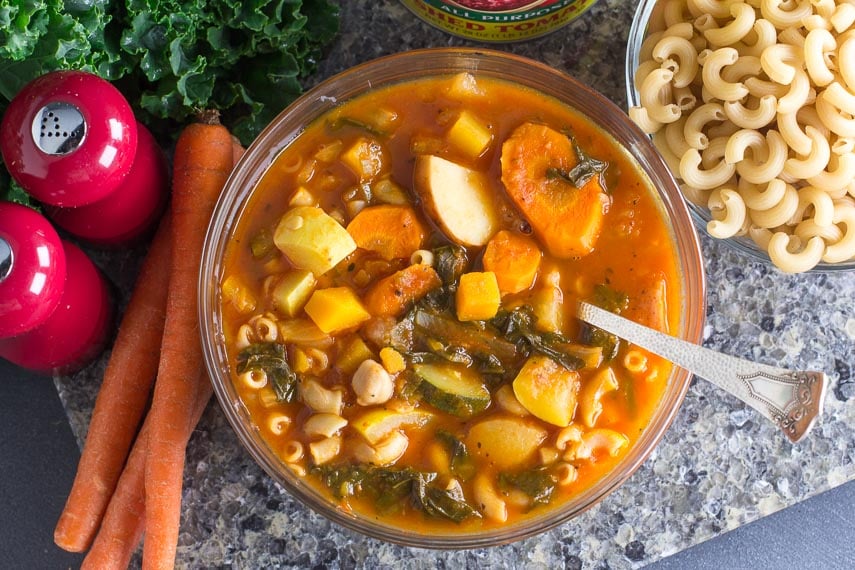
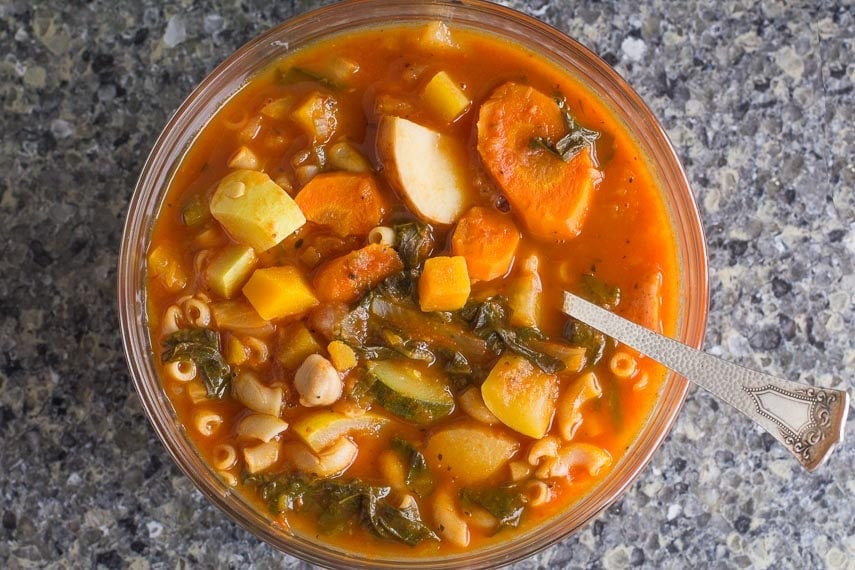
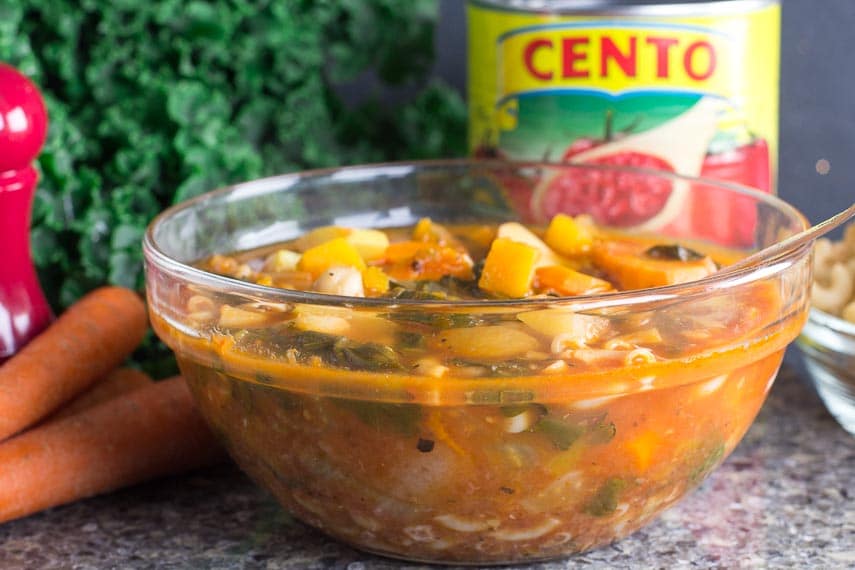
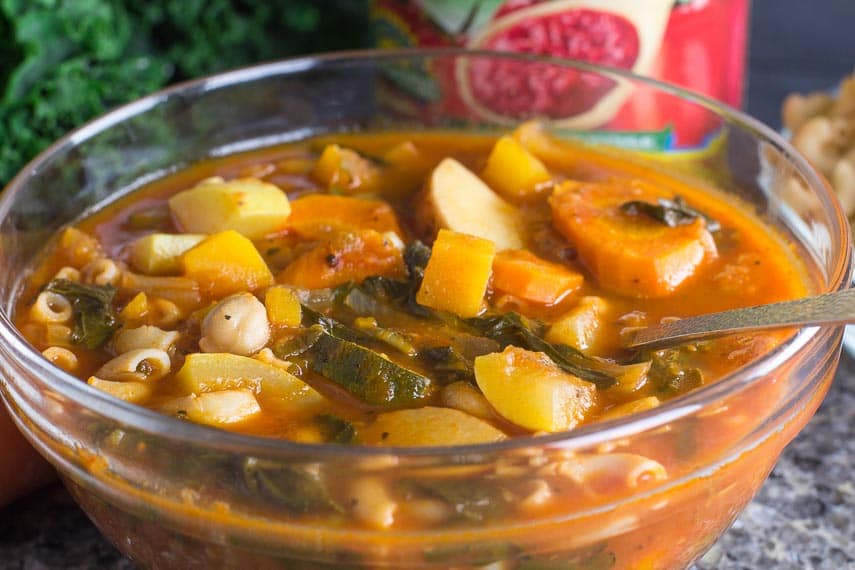
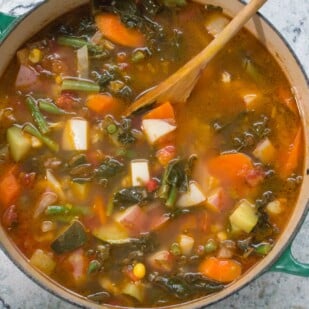
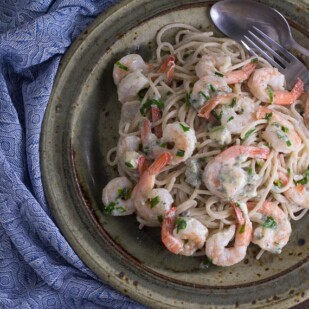




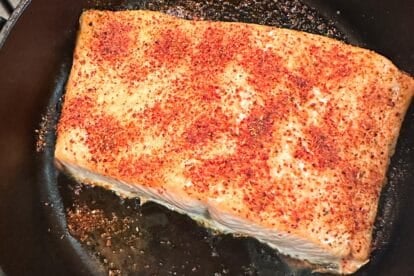
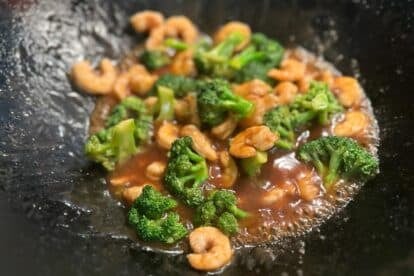
3/4 cup times 14 equals 10.5 cups, not 18
I have adjusted what it says, However, as it says, it very much “about” as every time you make this soup the vegetables absorb varying amounts of liquid, yielding different volumes in the end.
Can this be frozen perhaps without pasta and add that fresh when taken out of freezer. Thank you.
Yes it would freeze, best without pasta.
This soup sounds delicious!! However I am experiencing some very uncomfortable reflux and tomatoes are on the no no list. What can I sub for the can of tomatoes?
Many thanks. Any soup recipe I really want to make finds tomatoes in the recipe.
Peggy
Sassypegg@aol.com
Hi Peggy, tomatoes are very much a part of this recipe. I would try a completely different recipes, such as the Root Vegetable Soup.
Are there any other beans that would work instead of chickpeas? Also, could I add a hambone?
Love the ham bone addition! You could use other beans, just adhere to ones that have low FODMAP serving sizes and stick with those guidelines.
Thank you for info about beans and hambone.
A couple of other questions: would canned butter beans get too soft? Also, would kobocha squash work instead of patty pan which I rarely see anymore? Finally, would a crock pot on low work for this? Thanks!
I think canned butter beans would be fine (I have used them). LOVE kabocha. And yes, try the slow cooker!
Any advice on converting this to a slow cooker recipe?
I really don’t. You are not starting with dried beans. The whole thing cooks fairly quickly, and certainly the pasta would not work that way. The cook time is only 30 minutes.